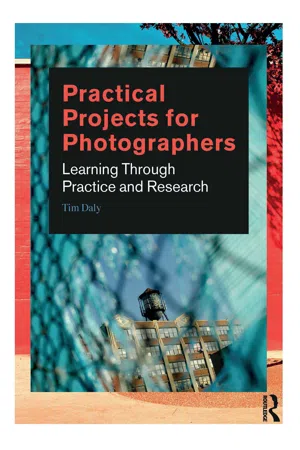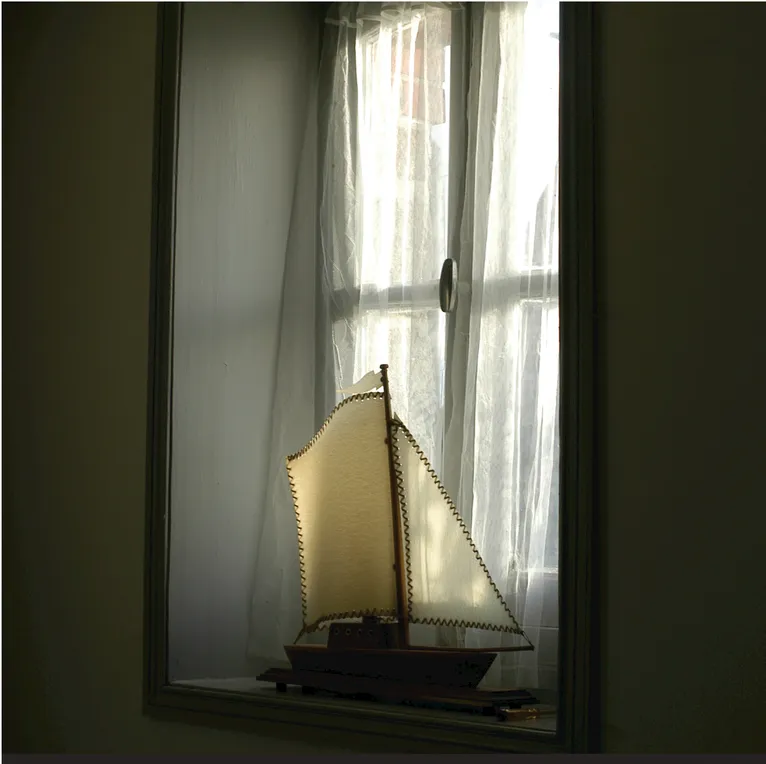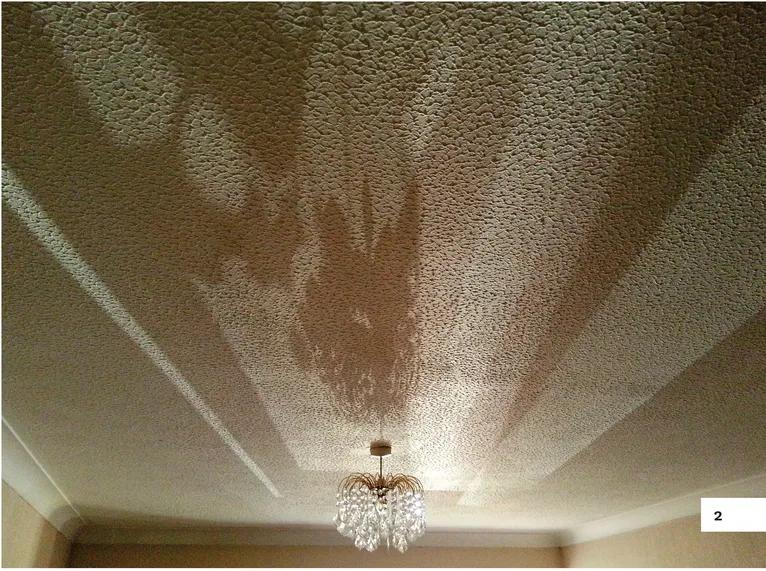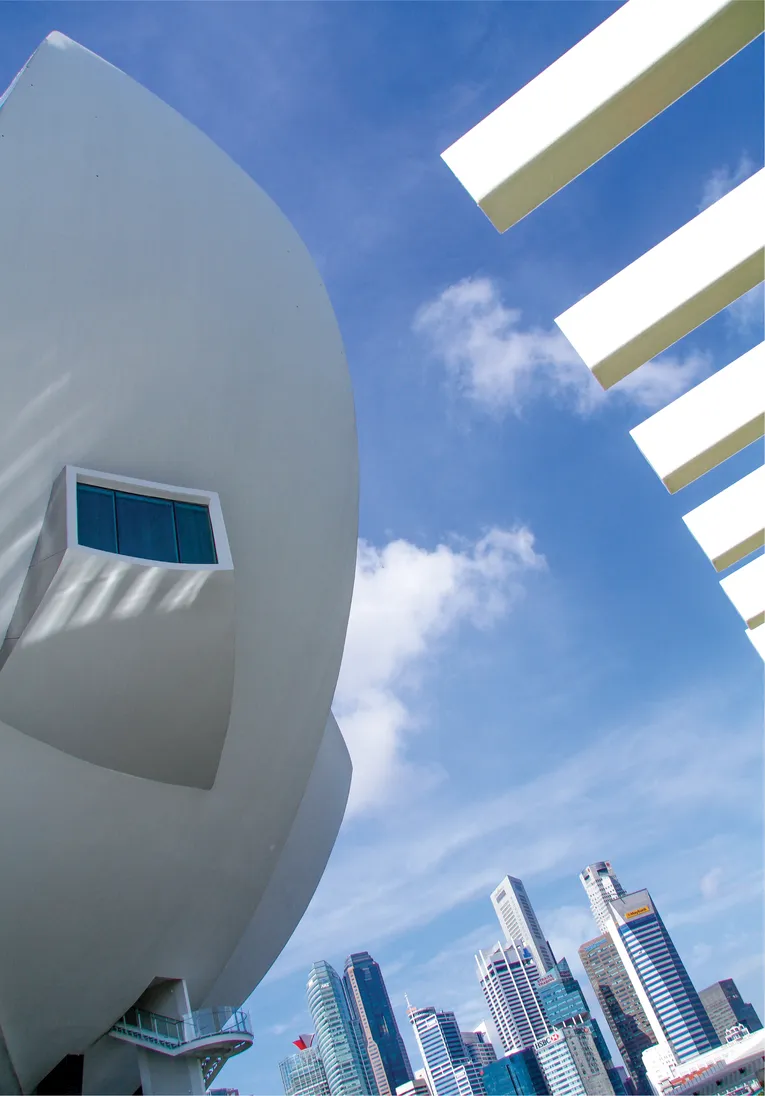
- 216 pages
- English
- ePUB (mobile friendly)
- Available on iOS & Android
eBook - ePub
About this book
Expert photographer and instructor Tim Daly presents over 20 practical projects for the budding photographer to develop their technical and research skills.Each project is a ready-made resource - the assignments vary in size and complexity, exploring a wide range of outputs (print, photobook, blog) and are mindful of limited resources, travelling distances and access to expensive equipment. Within each section are examples of notable photographers from around the world, suggested responses, practice tips, readings from key thinkers and further resources. This book blends understanding of context and technique to help photographers find new ways to work through the creative process.
Frequently asked questions
Yes, you can cancel anytime from the Subscription tab in your account settings on the Perlego website. Your subscription will stay active until the end of your current billing period. Learn how to cancel your subscription.
At the moment all of our mobile-responsive ePub books are available to download via the app. Most of our PDFs are also available to download and we're working on making the final remaining ones downloadable now. Learn more here.
Perlego offers two plans: Essential and Complete
- Essential is ideal for learners and professionals who enjoy exploring a wide range of subjects. Access the Essential Library with 800,000+ trusted titles and best-sellers across business, personal growth, and the humanities. Includes unlimited reading time and Standard Read Aloud voice.
- Complete: Perfect for advanced learners and researchers needing full, unrestricted access. Unlock 1.4M+ books across hundreds of subjects, including academic and specialized titles. The Complete Plan also includes advanced features like Premium Read Aloud and Research Assistant.
We are an online textbook subscription service, where you can get access to an entire online library for less than the price of a single book per month. With over 1 million books across 1000+ topics, we’ve got you covered! Learn more here.
Look out for the read-aloud symbol on your next book to see if you can listen to it. The read-aloud tool reads text aloud for you, highlighting the text as it is being read. You can pause it, speed it up and slow it down. Learn more here.
Yes! You can use the Perlego app on both iOS or Android devices to read anytime, anywhere — even offline. Perfect for commutes or when you’re on the go.
Please note we cannot support devices running on iOS 13 and Android 7 or earlier. Learn more about using the app.
Please note we cannot support devices running on iOS 13 and Android 7 or earlier. Learn more about using the app.
Yes, you can access Practical Projects for Photographers by Tim Daly in PDF and/or ePUB format, as well as other popular books in Arte & Fotografia. We have over one million books available in our catalogue for you to explore.
Information

Chapter One
Observation
Project 1
Light
Light has the potential to transform ordinary things into special visual events, full of interest and eye-catching details.
CONTEXT
In the nineteenth century, many scientists were trying to make permanent the effects of light on sensitive materials; while at the same time artists were already switched on to the potential of light in the picture-making process. For many of the world’s leading painters, light was an instrumental force in the creative process. Paintings by artists such as Caravaggio, Joseph Wright of Derby and Claude Monet are primarily studies of atmospheric light and how it can be used to describe subject matter.
Take this special light away and you’re left with purely shapes, structures and arrangements. For photographers, the control of light through exposure is the most fundamental aspect of the capture process. Versatile photographers are able to manage varying levels of light by employing different techniques that enable shooting to continue.
“Light is the photographic medium par excellence; it is to the photographer what words are to the writer; colour and paint to the painter; wood, metal, stone, or clay to the sculptor.”
Andreas Feininger
ASSIGNMENT BRIEFS
Look for fleeting light opportunities and build a project around these transient, short lived moments. Choose a location near work or home so you can make short regular shooting trips. As the project develops you’ll start to spot the most interesting times of day to return, reshoot and build up your response.


1. On your windowsill
Wherever you live, there’ll be at least one window in your home that is flushed with light at a certain time of the day. As the sun moves in the sky it will stream straight lines of light into your house, making atmospheric shadows and patterns on surfaces inside. Consider how you can make the most of this daily occurrence by experimenting with your shooting position or by moving objects in and out of the frame. You may also introduce an extra prop such as an exquisite cut flower, which you can add into your composition and record it’s fading beauty over time. Look at photographer Joseph Sudek who made masterful study of simple objects on his studio windowsill, a sideline practice that engrossed him for most of creative career.
2. Domestic phenomenon
Some of the most memorable photographs are observed and captured in the most unlikely situations. If you have a good quality camera phone, then you can respond to an unexpected moment when it arrives. This example of reflected light streaming across a textured ceiling was a curious phenomenon and lasted for just a few minutes. It was framed and captured with a camera phone. Camera phones can be an effective tool for capturing incidentals and as long as you don’t want to print big and they are the most portable gadget you can have. The master of shooting in these kinds of unexpected settings is photographer William Eggleston – look at his groundbreaking book Guide.

3. Silhouettes and layers
Light illuminates everything, but its very absence can help draw and define delicate shapes too. Silhouettes and shadows, especially those projected onto translucent materials, can create interesting optical curiosities. Shooting towards the direction of the light behind a shield of fabric allowed me to create the intricate shapes created by shadows cast from a plant. Like “real” Photoshop layers, working with translucent materials on location enables you to overlay shapes, textures and lighting effects without going near a computer. As objects get closer to the screen they become sharper and vice-versa, so there’s plenty of scope for different options. For further inspiration look at photographer Fay Godwin’s Glassworks project to see the creative results of in-situ layering.

4. Architectural light
Many big cities have interconnected retail, business and residential areas that have been designed to encourage you to walk around and explore. High-rise too, can cast a very special quality of light on ground-floor walkways and pedestrian areas due to their sheer size and lightblocking properties. In this example shot in Nanterre, Paris, the midday light was sliced in two by a gigantic apartment block, making it freezing cold in the shade but hot in the sunlight. Visit a high-rise estate and see if you can capture the changing passage of light.
critical readings
John Szarkowski’s introduction to William Eggleston’s Guide provides an insight to the rationale behind the photographer’s interest in vernacular and domestic subject matter.
http://www.egglestontrust.com/guide_intro.html
PRACTICAL SKILLS
Shooting light offers a chance to experiment with different exposure techniques and your own physical viewpoint.
5. Silhouettes through exposure
With modern DSLR’s, shooting in low light is no longer an issue. In twilight, you’ll see subjects becoming interesting if they had a good shape to start with. In this example, I’ve shot against the light using bracketing. By shooting two extra shots half a stop either side of your meter reading, you’ll have the luxury of three files to choose from later on.

6. Light and viewpoint
Thin, narrow streets accompanied by sheer sided warehouses or tenement buildings, can often be found near seafronts or docklands. In these locations, light is funneled down the streets in a shape, like using a barn door modifier in a studio shoot. As this example shows, light that is shaped by buildings to shine in a thin line casts very dramatic shadows and really emphasises surface textures. Use your shooting position to keep a sense of space in your shots, through vistas or lots of three-dimensional depth.


PRACTICAL OUTCOME – Make an portfolio online
Flickr can be used as both cloud storage and an online portfolio site where you can keep your images at full resolution, while retaining all the EXIF data too. Unlike other online storage facilities, Flickr is highly visual and allows you to create albums, make images publicly viewable and, usefully, enables you to organise and display images by their creation date in online portfolios called “camera rolls.”
Get a free account at www.flickr.com.
crit and reflect
William Eggleston’s seminal series Southern Suite was published as a limited edition portfolio box of ten colour prints in 1981. Look at the works online and describe how light contributes to Eggleston’s study.

Project 2
Emphasis
On location, subject matter is never quite where you’d like it to be, but there are plenty of tricks for putting emphasis in exactly the right place.
CONTEXT
Observa...
Table of contents
- Cover
- Half Title
- Title Page
- Copyright Page
- Contents
- Introduction
- Chapter 1 Observation
- Chapter 2 Emphasis
- Chapter 3 Telling stories
- Chapter 4 About the past
- Chapter 5 In the present
- Chapter 6 Travel
- Chapter 7 Resources
- Bibliography
- Index